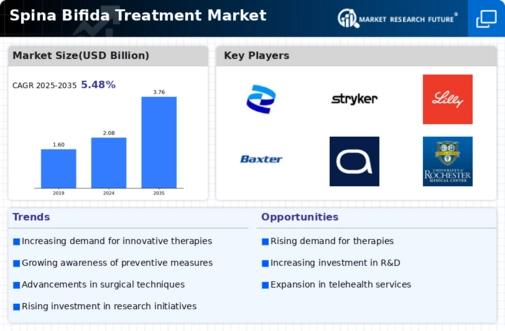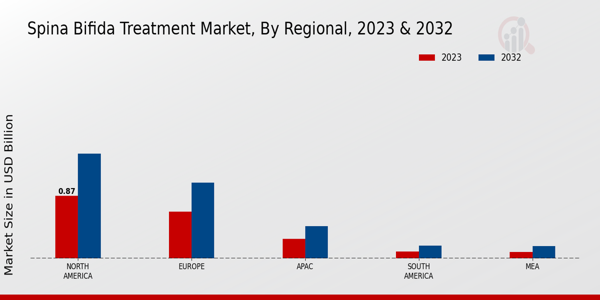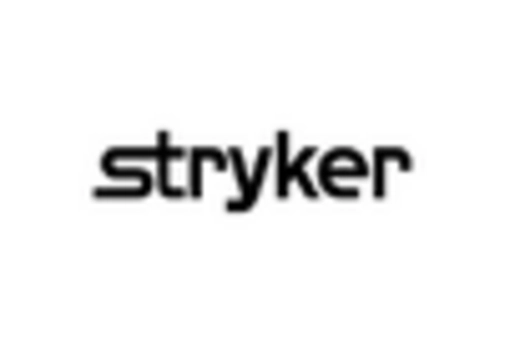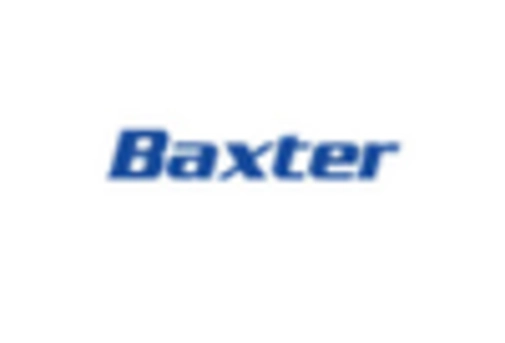Growing Awareness and Education
The increasing awareness and education surrounding spina bifida are pivotal in shaping the Global Spina Bifida Treatment Market Industry. Public health campaigns and educational programs are instrumental in informing communities about the condition, its prevention, and available treatments. This heightened awareness encourages early diagnosis and intervention, which are critical for improving patient outcomes. As more individuals and families become informed about spina bifida, the demand for specialized care and treatment options is likely to rise. This trend is expected to contribute to a compound annual growth rate of 5.52% from 2025 to 2035, reflecting the market's responsiveness to educational initiatives.
Rising Prevalence of Spina Bifida
The increasing incidence of spina bifida globally is a primary driver for the Global Spina Bifida Treatment Market Industry. As per health statistics, spina bifida affects approximately 1 in 1,000 births, leading to a growing demand for effective treatment options. This rise in prevalence necessitates advancements in medical interventions and support services, thereby propelling market growth. In 2024, the market is projected to reach 2.08 USD Billion, reflecting the urgent need for comprehensive care solutions for affected individuals. The focus on early diagnosis and intervention strategies further emphasizes the importance of addressing this condition.
Advancements in Medical Technology
Technological innovations in medical treatments and surgical procedures are significantly influencing the Global Spina Bifida Treatment Market Industry. Enhanced surgical techniques, such as in utero repair, have shown promising outcomes in reducing the severity of spina bifida. These advancements not only improve patient prognosis but also contribute to a more favorable quality of life for those affected. As the market evolves, the integration of robotics and minimally invasive procedures is likely to become more prevalent. This trend is expected to drive market growth, with projections indicating an increase to 3.76 USD Billion by 2035, highlighting the potential for ongoing technological advancements.
Government Initiatives and Funding
Government initiatives aimed at improving healthcare access and funding for spina bifida research are crucial drivers of the Global Spina Bifida Treatment Market Industry. Various countries are implementing policies to enhance prenatal care and support for families affected by spina bifida. Funding for research and development of new treatment modalities is also on the rise, fostering innovation in the field. These initiatives not only promote awareness but also facilitate access to necessary treatments, thereby expanding the market. The commitment of governments to address this condition underscores the importance of collaborative efforts in improving outcomes for affected individuals.
Increase in Healthcare Expenditure
The rise in global healthcare expenditure is a significant factor driving the Global Spina Bifida Treatment Market Industry. As nations allocate more resources to healthcare, there is a corresponding increase in funding for specialized treatments and services for conditions like spina bifida. This trend is particularly evident in developed countries, where healthcare budgets are expanding to include advanced medical technologies and comprehensive care programs. The focus on improving healthcare infrastructure and accessibility is likely to enhance treatment options for individuals with spina bifida, further stimulating market growth. The projected market value of 3.76 USD Billion by 2035 indicates the potential impact of increased healthcare investment.























Leave a Comment